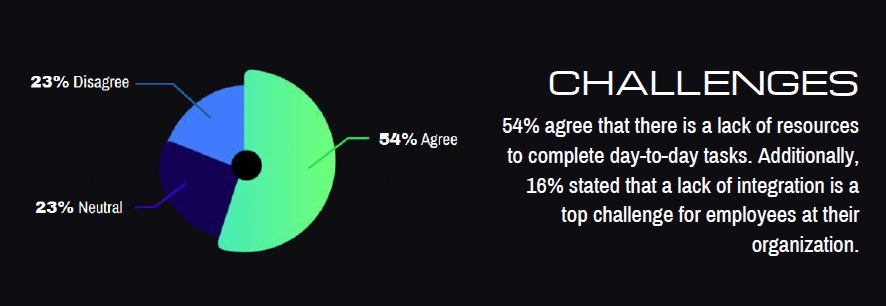
The consequences of outages have become a pressing issue as the largest IT outage in history continues to rock the world with severe ramifications. It has been estimated that this latest outage cost Fortune 500 companies as much as $5.4 billion in revenues and gross profit with Delta most recently confirming $380 million in revenue alone. According to the Catchpoint Internet Resilience Report, these types of disruptions, internet outages in particular, can have severe financial and reputational impacts and enterprises should strongly consider their resilience.
This isn't just an issue impacting companies using CrowdStrike's software, but is one that is costing companies millions across the board. The Internet Resilience Report revealed that 43% of surveyed businesses in sectors including finance, e-commerce, cloud, and healthcare estimated losses of over $1 million due to internet outages or degradations in the month prior to the 2024 survey.
In today's interconnected world, a single point of failure in internet infrastructure can translate directly into substantial revenue losses. Thus, a top-down approach to internet resilience is needed. Companies should consider the establishment of a chief resilience officer (CRO) within the C-suite. This role is akin to that of a Chief Security Officer, emphasizing the importance of resilience alongside security. One of the primary causes of frequent outages is the lack of centralized and unified monitoring tools, resulting in a fragmented IT landscape reminiscent of the Balkans. The CRO should be responsible for driving the standardization of telemetry across the organization to enhance resilience. As the report highlights, the financial and reputational consequences of inadequate resilience are as severe as those of security breaches. Therefore, it is imperative that companies prioritize resilience at the highest levels of their organization.
In fact, Fortune 2000 companies are leading the charge in the new trend and increasingly recognizing the value of the CRO role. These executives are tasked with driving resilience planning, identifying single points of failure, and devising strategies to mitigate potential disruptions. The extensive Adobe Experience Cloud outage last year, which lasted 18 hours (in addition to the recent CrowdStrike outage), serves as a stark example of the type of service disruption that a CRO could help manage and prevent.
However, the creation of a CRO position is not the only path to achieving resilience. Organizations should also foster a culture of resilience by learning from their mistakes by documenting and studying failures within the product delivery chain and encouraging a mindset of continuous improvement. Companies should conduct preemptive exercises to test their systems, identifying weaknesses and refining their responses to potential outages.
Moreover, it is crucial for businesses to work with reliable vendors who demonstrate a commitment to resilience. While everyone is allowed to make mistakes, repeated failures or a lack of accountability should prompt companies to reconsider their partnerships. Learning from each incident and ensuring that vendors do the same is key to maintaining a resilient internet infrastructure.
As we navigate our increasingly digital-first world, the importance of internet resilience cannot be overstated. It should be an integral part of any disaster recovery or business continuity program, discussed at the highest organizational levels and tested regularly. While we can't simulate every possible outage scenario, planning for the unexpected has become a crucial business practice.
Prioritizing internet resilience and taking resiliency into consideration from the c-suite down is essential for any business aiming to thrive amidst the complexities of our connected landscape.


